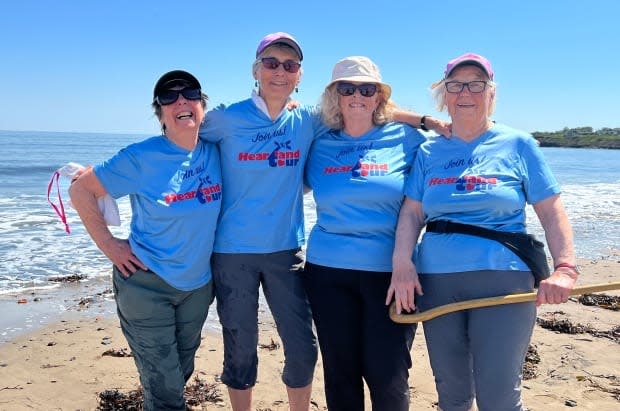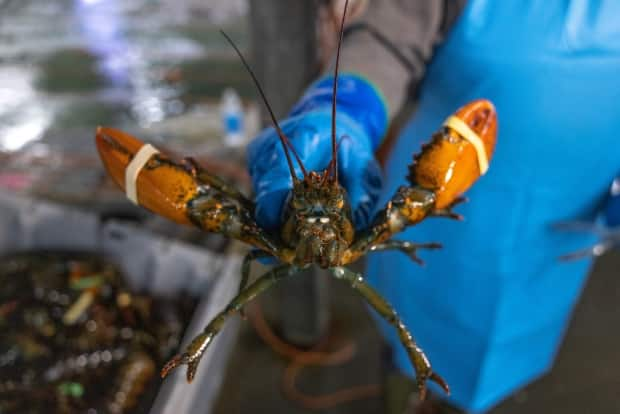Thousands of lobster bands are washing up on Cape Breton beaches. These women want to know why

A group of Cape Breton women want to know why thousands of rubber lobster bands are washing up on Dominion Beach Provincial Park and Big Glace Bay Beach.
Denise Aucoin, Barb Holloway, Sylvia Hulford and Helen Slade, are avid birders and walk the beaches almost every day. Last year, they started to notice a lot of lobster bands on the sand and began collecting them.
This year they took a more scientific approach and began counting them at the beginning of the local lobster season, which started May 15. Since that day, they've found more than 6,600.
"The first question we'd like to know the answer to is where are they coming from? The second thing is, how come there are so many? The third thing is, what are we going to do with them? And the fourth thing is, is there another way other than the rubber bands that they could use so it wouldn't harm the environment?" said Aucoin.

Slade said one of their biggest concerns is wildlife as it's known that sea birds can have large amounts of plastic and other garbage in their stomachs.
"There's no reason [birds] wouldn't be picking up these lobster bands so we just want to prevent as much as we can," said Slade.
"We can't do it all but we can do our little bit."
They're wondering if there is a way to recycle the bands and whether anything can be done to prevent the bands from ending up on the beaches in the first place.
The bands are made of rubber and will eventually break down over several years. They're used to keep lobsters from hurting each other while in storage. Prior to using bands, lobstermen used wooden lobster plugs, which were inserted into the claw of the lobster to prevent it from opening. The practice was discontinued, in part because it left the lobster vulnerable to infection.
Kevin Squires fishes out of Big Bras d'Or and is a member of the Maritime Fishermen's Union. Squires said it's not uncommon to lose a couple lobster bands, especially when the weather is bad.
"It's just sort of an unavoidable problem that happens," said Squires.

However, he said the high number of bands the group is finding in the Glace Bay area may mean ocean currents are playing a role.
Adam Drozdowski is a physical oceanographer with the Bedford Institute of Oceanography. He said both beaches are in estuaries, which could mean more debris is getting captured on the beaches.
He also believes the source of the bands is nearby.
"To me it suggests because they're so concentrated, they're coming from one nearby source, possibly two."
Last month, another beach comber discovered a high concentration of lobster bands on Cape Sable Island. The bands were found to be coming from a lobster processing facility and a net was fitted on the discharge drains from the plant to prevent it.

Aucoin, Slade, Holloway, and Hulford say they'll continue collecting the bands and that their daily excursions have caught the attention of other beach goers, who are now also picking up trash. They are hoping someone may have a use for the bands.
Squires said it is possible that a fisher could take the rubber bands and reuse them. However, he doubts anyone planning to store lobster for a lengthy period of time, like a lobster buyer, would use them because they're likely degraded from being in the sun.


